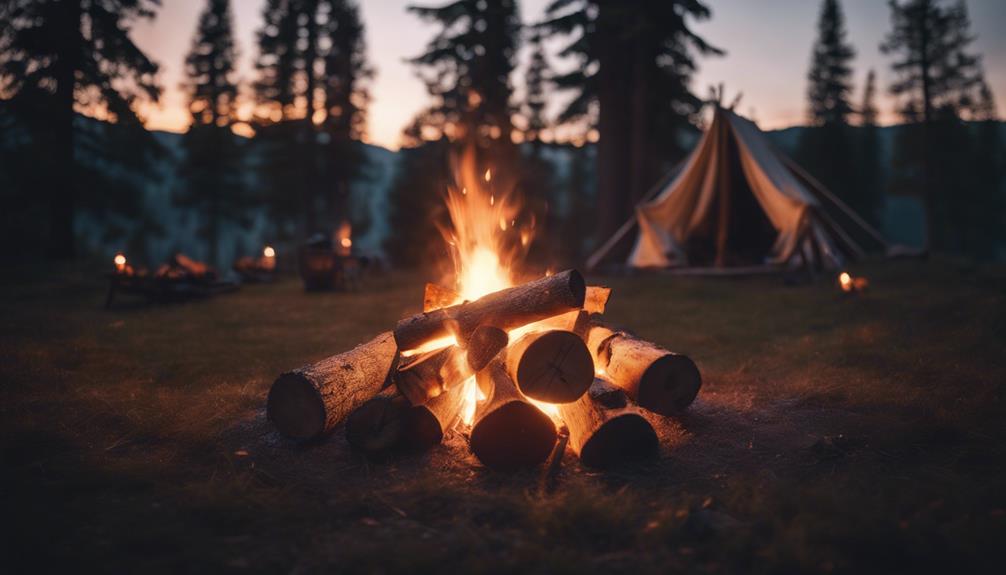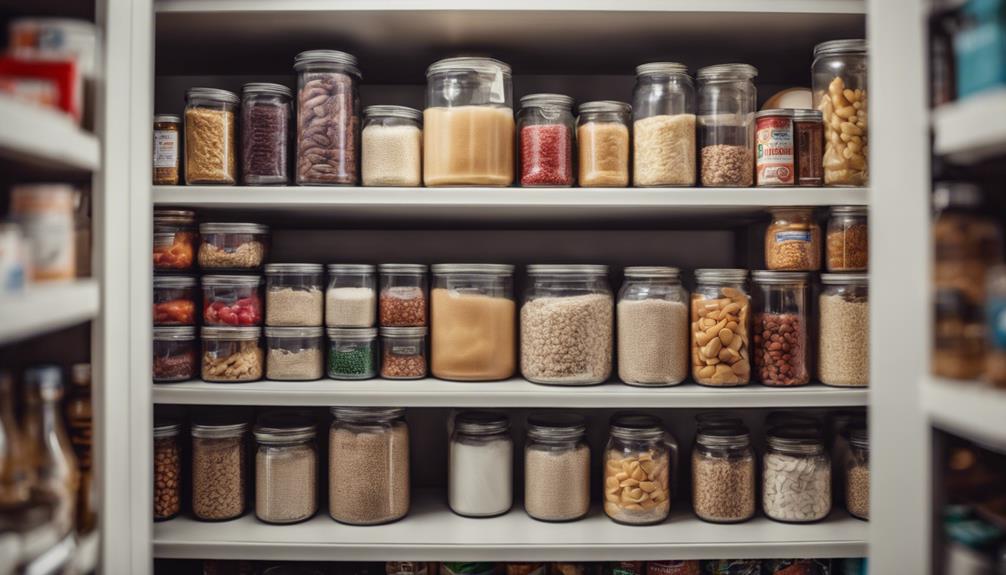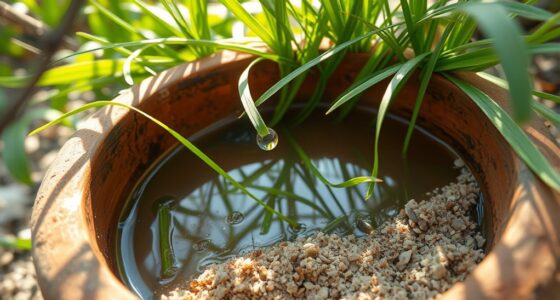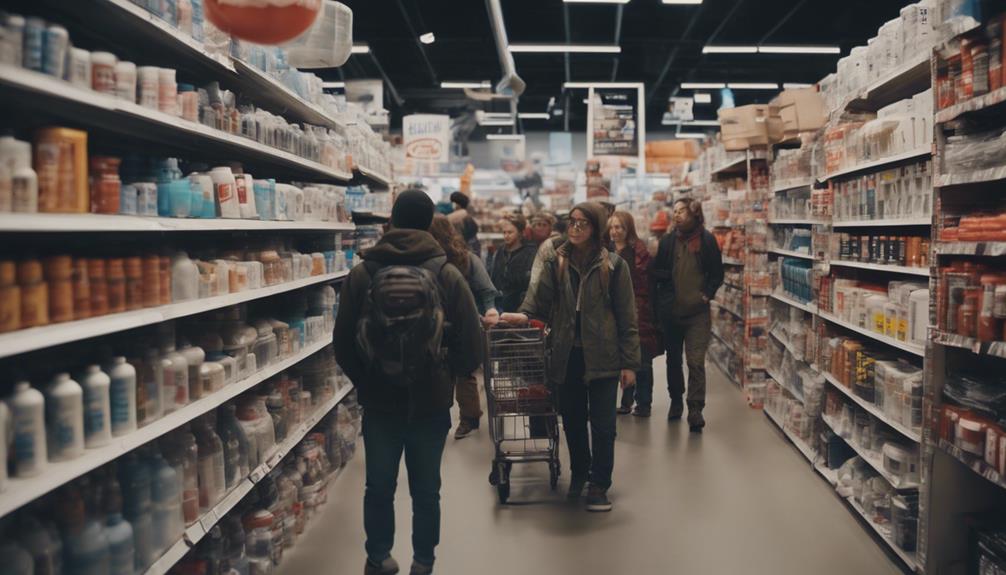To master the art of campfire building, start by gathering dry wood and kindling. Choose a safe, designated fire ring or pit for containment. Understanding different fire structures like the teepee or log cabin helps you create the perfect flame for warmth and cooking. Remember to use small logs for efficient burning, and always prioritize safety. Heating rocks can enhance warmth, but make certain they're dry to avoid hazards. A great campfire can elevate your outdoor experience, so let's explore tips and techniques that will guarantee your next fire is a memorable one.
Key Takeaways
- Choose a designated fire area and use a fire ring or pit to ensure safety and containment.
- Gather essential materials: dry logs, kindling, and an ignition source like matches or a lighter.
- Select a campfire structure, such as a teepee or log cabin, based on your intended fire size and duration.
- Always prioritize safety by using dry wood and maintaining a manageable fire size for the environment.
Essential Fire Starting Tools
To successfully ignite a campfire, you need essential tools like fuel, oxygen, and a reliable heat source.
Start by gathering dry fuel, such as logs and branches, which will sustain your fire. You'll also want some kindling—think dry twigs, grass, or leaves—to help catch the flame quickly.
Don't forget your ignition source; lighters or matches are must-haves. For added convenience, consider fire-starting logs, which are individually wrapped and designed for fast lighting.
Make sure you collect enough materials before you start, ensuring a steady burn. With these tools in hand, you're well-prepared to create a warm, inviting fire for your camping experience.
Campfire Basics Explained
Understanding the fundamentals of campfires will help you create a safe and enjoyable outdoor experience.
A campfire is an outdoor fire built in designated areas, serving as a social hub for warmth, light, and cooking. It's essential to set up your fire in a fire ring or pit to guarantee safety.
Unlike bonfires, campfires are smaller and easier to manage, making them ideal for cozy gatherings. When building your campfire, consider different types like the teepee or log cabin, each offering unique advantages.
Always use dry wood and kindling, and remember to keep your fire contained. By grasping these basics, you'll enjoy the warm ambiance and camaraderie that a campfire brings.
Campfires Vs. Bonfires

What sets campfires apart from bonfires is their size, purpose, and safety requirements, making each suitable for different outdoor experiences. Campfires are typically smaller, ideal for warmth and cooking, while bonfires roar with intensity, perfect for celebrations.
Here's a quick comparison:
- Size: Campfires are contained; bonfires are large and open.
- Purpose: Campfires focus on socializing and cooking; bonfires often serve as a spectacle or for disposal.
- Fuel: Campfires use small logs and twigs; bonfires require bigger items like pallets.
- Safety: Campfires are safer in designated areas, whereas bonfires demand wide-open spaces to avoid hazards.
Understanding these differences helps you choose the right fire for your outdoor adventure.
Types of Campfire Structures
Campfire structures come in various designs, each offering unique benefits for warmth and cooking during your outdoor adventures.
The teepee fire, with logs stacked to resemble a teepee, burns hot and quick, making it great for immediate heat.
The log cabin fire uses larger logs to provide a sustained burn, perfect for long evenings.
If you've got limited wood, the Indian campfire, arranged in a star shape, is an efficient choice.
For a self-sustaining option, try the pyramid fire, which can last up to an hour without attention.
Finally, the platform fire involves layering logs for stability, ensuring your campfire stays contained and effective. This method is particularly useful in windy conditions, as it creates a solid structure that burns steadily without collapsing. Additionally, fireproofing your remote retreat is crucial to ensure the fire remains controlled and does not pose a risk to your surroundings. By selecting a safe location and clearing the area of debris, you further reduce the chances of an unintentional wildfire.
Experiment with these structures to find the one that best suits your needs!
Techniques for Staying Warm

After setting up your campfire structure, it's important to reflect on techniques for staying warm throughout the night. Here are four effective methods to take into account:
- Use dry rocks: Avoid waterlogged rocks, as they can explode when heated.
- Dig a hole: Create a pit to safely heat your rocks and trap warmth.
- Heat duration: Verify you heat the rocks for 1-2 hours to maximize their effectiveness.
- Transfer method: Once heated, place the rocks in the pit to provide sustained warmth throughout the night.
Frequently Asked Questions
What Are the Best Locations to Set up a Campfire?
You should set up your campfire in designated fire rings or pits, away from overhanging branches. Look for flat, dry ground that's at least 15 feet from tents or other flammable materials for safety.
How Do Weather Conditions Affect Campfire Safety?
Weather conditions can greatly impact campfire safety. You should avoid lighting fires during strong winds, heavy rain, or dry spells. Always check local regulations and fire warnings to guarantee a safe experience while camping.
Can I Cook Over a Campfire Without a Grill?
Did you know 70% of campers cook over an open fire? You can definitely cook without a grill! Just use skewers, a cast-iron skillet, or wrap food in foil for delicious meals right over the flames.
What Is the Best Time of Year for Campfires?
The best time for campfires is during cooler months, like fall and early spring, when the air is crisp. You'll enjoy the warmth and ambiance, making your outdoor experience cozy and inviting.
How Do I Extinguish a Campfire Safely?
Extinguishing a campfire safely is essential; about 85% of wildfires start from unattended fires. To douse yours, pour water thoroughly, stir the ashes, and make certain everything's cool to the touch before leaving.
Conclusion
As you master the art of campfire building, remember that nearly 75% of campers say a campfire is the highlight of their outdoor experience.
With the right tools and techniques, you can create a cozy atmosphere for storytelling and laughter.
Whether you're roasting marshmallows or sharing adventures, each flicker of the flame adds to your memories.
So gather your materials, ignite your passion, and let the warmth of your campfire enhance every moment spent under the stars!










